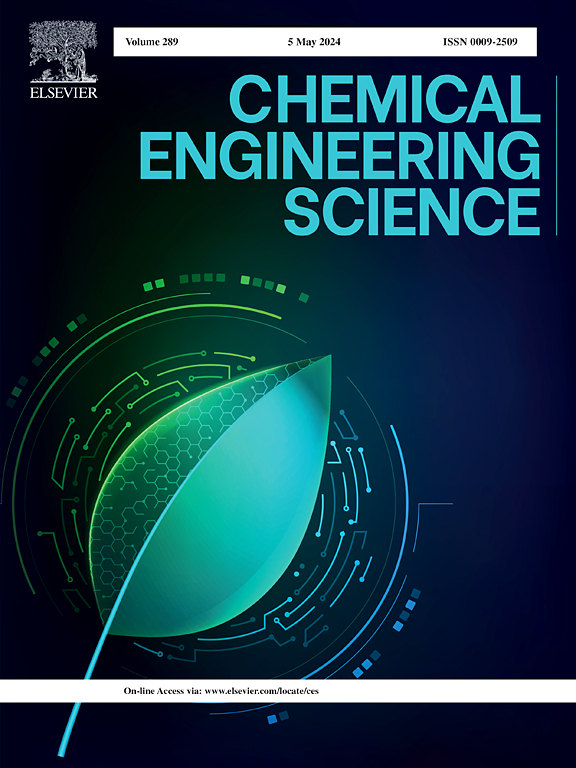纳米羟基磷灰石钙在单室碳布阴极微生物电解池中诱导生物电催化制氢
IF 4.1
2区 工程技术
Q2 ENGINEERING, CHEMICAL
引用次数: 0
摘要
高效催化剂是提高微生物电解池(MEC)产氢效率的关键。本研究采用共沉淀法制备了羟基磷灰石(HA)纳米颗粒,并将其作为一种新型催化剂,在单室碳布阴极微生物电解池中促进麦秸废弃物产生h2的生物电化学反应。结果表明,在MEC中添加200 mg/L HA时,H2产率最高为2.4 mmol/g-straw,是不添加羟基磷灰石纳米颗粒的MEC的1.9倍。此外,提供200 mg/L的HA,促进了底物的利用和胞外聚合物(EPS)的形成,电化学特性分析显示电荷转移电阻和电化学噪声测量均有所降低,表明电子转移过程更有效。此外,微生物群落结果表明,羟基磷灰石促进了MEC-200HA阳极生物膜中众所周知的潜在h2产生菌和电生微生物的增殖,包括芽孢杆菌sp.(23.35 %),clostridium sp.(20.15 %)和Ruminococcaseae成员(11.29 %)。这些微生物对秸秆生物质进行生物氧化,并促进电荷从基质向电极的转移,从而提高H2的产量。这项研究将为微生物电化学系统中纳米颗粒催化剂的进一步优化铺平道路,为可再生能源技术的进步做出贡献。本文章由计算机程序翻译,如有差异,请以英文原文为准。


Calcium hydroxyapatite nanoparticle-induced bio-electrocatalytic hydrogen production in a single-chambered carbon cloth-based cathodic microbial electrolysis cell
An efficient catalyst is crucial for enhancing hydrogen (H2) production in microbial electrolysis cell (MEC). In this study, a hydroxyapatite (HA) nanoparticle was developed by coprecipitation and used as a novel catalyst to promote H2-producing bioelectrochemical reactions from wheat straw wastes in a single chambered carbon cloth-based cathodic microbial electrolysis cell. Results demonstrated that adding 200 mg/L HA in MEC achieved a maximum H2 yield of 2.4 mmol/g-straw which is ∼1.9 times that of the MEC operated without hydroxyapatite nanoparticles. Moreover, the supply of 200 mg/L HA, promoted substrate utilization and extracellular polymer substance (EPS) formation, and the electrochemical characteristics analyses revealed a decrease both in charge transfer resistance and electrochemical noise measurements, indicating more efficient electron transfer processes. Furthermore, microbial community results showed that hydroxyapatite promoted the proliferation of the well-known potential H2-producers and electrogenic microbes in MEC-200HA anodic biofilm, including bacillus sp. (23.35 %), clostridium sp. (20.15 %), and members of Ruminococcaseae (11.29 %). These microbes syntrophically bio-oxidized straw biomass and facilitated charge transfer from substrates to electrodes, enhancing H2 production. This research will pave ways for further optimization of nanoparticle-based catalysts in microbial electrochemical systems, contributing to the advancement of renewable energy technologies.
求助全文
通过发布文献求助,成功后即可免费获取论文全文。
去求助
来源期刊

Chemical Engineering Science
工程技术-工程:化工
CiteScore
7.50
自引率
8.50%
发文量
1025
审稿时长
50 days
期刊介绍:
Chemical engineering enables the transformation of natural resources and energy into useful products for society. It draws on and applies natural sciences, mathematics and economics, and has developed fundamental engineering science that underpins the discipline.
Chemical Engineering Science (CES) has been publishing papers on the fundamentals of chemical engineering since 1951. CES is the platform where the most significant advances in the discipline have ever since been published. Chemical Engineering Science has accompanied and sustained chemical engineering through its development into the vibrant and broad scientific discipline it is today.
 求助内容:
求助内容: 应助结果提醒方式:
应助结果提醒方式:


